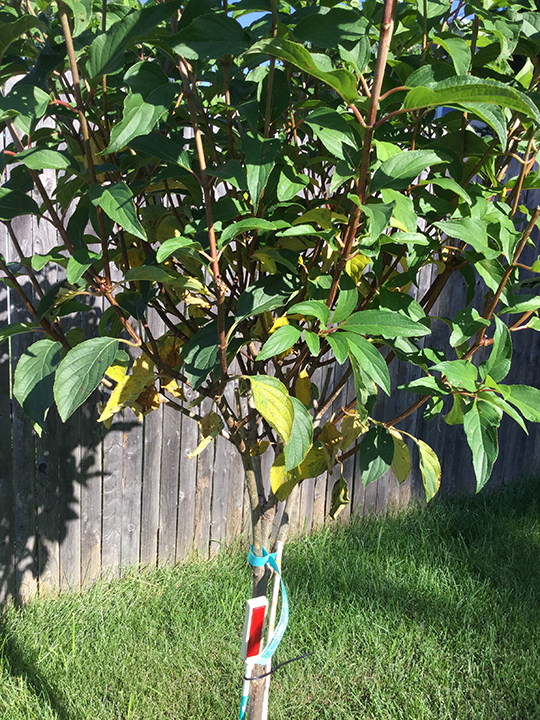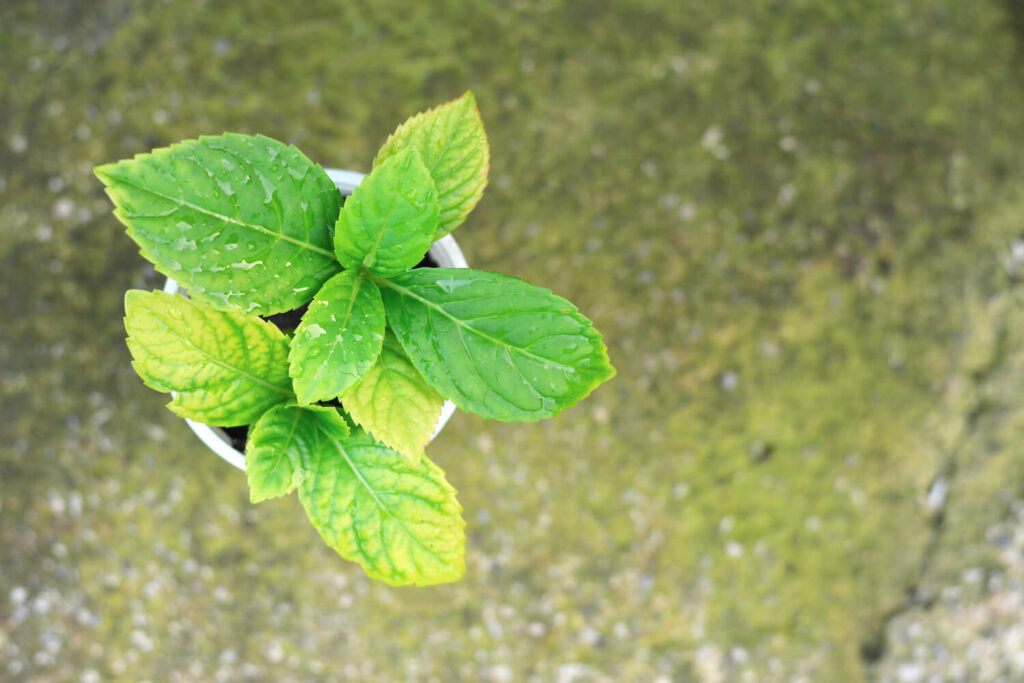The Hydrangea Leaves Turning Yellow Ideas
Table of ContentsHydrangea Leaves Turning Yellow Fundamentals ExplainedEverything about Hydrangea Leaves Turning YellowSome Of Hydrangea Leaves Turning YellowThe 8-Minute Rule for Hydrangea Leaves Turning YellowThe Main Principles Of Hydrangea Leaves Turning Yellow What Does Hydrangea Leaves Turning Yellow Mean?
Huge fallen leaves often look sagging during the afternoon warmth. When they fail to perk up in the evening or still look shrivelled in the morning, your plant could be overwatered.Eliminate the plant from the dirt and trim out any kind of roots that aren't white and swollen (plump) (Hydrangea Leaves Turning Yellow). Replant in a brand-new location or work some sand right into the soil for much better drainage. Underwatering additionally causes delegates turn yellow with brown, crunchy sides. Don't try to correct the problem by watering excessively.

The Ultimate Guide To Hydrangea Leaves Turning Yellow
additionally first appears on the older fallen leaves, however the fallen leave capillaries stay environment-friendly. A magnesium shortage shows up first on old fallen leaves and must not be perplexed with an iron shortage [Picture: izzzy71/ Shutterstock. com] While there is generally enough iron in natural dirt, hydrangeas frequently struggle to take in enough of it.
The finest method to stop iron deficiency-chlorosis in hydrangeas is to plant them in suitable ericaceous or acidic dirt. When planting in a bed, mix in some peat or reduced-peat ericaceous garden compost and examine the p, H value annually. This is required because the compost combination around the plants will affect the p, H worth of the dirt in the future and the p, H value might increase once more.

Everything about Hydrangea Leaves Turning Yellow
September is the best time of year to do something concerning those hydrangeas. Their leaves are transforming yellow, the blossoms have faded, and their gangly appearance is making you insane.
Mophead, Lacecap and Oakleaf hydrangeas bloom on old wood. Do not prune Mophead, Lacecaps and Oakleaf hydrangeas to the ground, as you will certainly eliminate the stems that are prepared to grow next spring.
This way you will not be getting rid of way too many of following year's blossom buds. Prune out as much dead timber as you can find. You can cut deadwood to the ground. If the hedge is obtaining bigger than you like, you can secure a third of the live wood while you're in there.
Hydrangea Leaves Turning Yellow for Dummies
We're ideal in the center of our late-blooming hydrangea period right here, so I assumed I 'd share a pointer for this specific type of hydrangea that I located really intriguing. A great deal of individuals have a comparable concern with their panicle hydrangeas where they begin to see the fallen leaves turning yellow and leaving at various components of the period and it can be quite significant and quite concerning because it can occur really swiftly on a shrub that appears like it's or else truly healthy and balanced.
I have actually shared it on Instagram before, yet I realized I have actually never told you about this in an actual, complete post, so today I'm caring for that. When I state that this uses to panicle linked here hydrangeas, that suggests the type of hydrangeas that typically flower later on in official statement summer, usually around August.
Where we reside in area 6, they're quite very easy to have success with and they're truly prominent in our location, which is wonderful because that suggests that there are hydrangeas simply about anywhere currently of year. When you see your hydrangea leaves beginning to transform yellow, you could believe that your plant is passing away or being abused somehow, yet as a matter of fact, the opposite is real.
The Main Principles Of Hydrangea Leaves Turning Yellow

Courtenay is the writer of the publication The Cleansing Ninja and has been included in numerous magazines consisting of Nation Sampler Farmhouse Style, Better Residences and Gardens, Parents Magazine, Real Simple, and Our Homes.
Water logged soil deprives the roots of oxygen, leading to root rot and yellow leaves. On the other hand, underwatering or dehydration triggers the plant to my response wilt and its foliage to yellow. Preserving a regular watering schedule and ensuring appropriate drain via water drainage openings or layers can help protect against these concerns.
Hydrangea Leaves Turning Yellow Can Be Fun For Anyone
Consistently examine the soil acidity, and change as required to keep the optimum p, H level for hydrangeas. With appropriate care and maintenance, hydrangeas can flourish and retain their vivid, vivid leaves. Hydrangea leaves transforming yellow is an usual problem that can be credited to various factors. Among the main reasons is inappropriate watering, as hydrangeas need consistently wet dirt to flourish.
The sort of yellowing seen (e. g. the setting of the influenced leaves on the plant, and/or the pattern and setting of the yellowing on the leaf itself) will usually differ according to the reason. The chlorosis is often accompanied by various other signs offering further hints regarding the cause, e.Instances consist of sap-sucking bugs such as aphids, red crawler termites and whiteflies, and root feeders such as vine weevil and cabbage root fly. Once once more it is frequently possible to discover the offender on the leaves or among the roots.